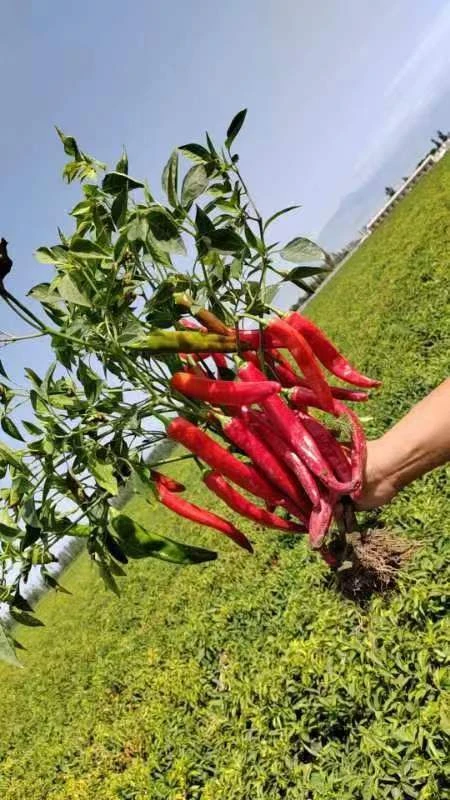- No. 268 Xianghe Street, Economic Development Zone of Xingtai city, Hebei 054001 China
- Byron@hbhongri.cn
paprika sweet powder
The Allure of Paprika Sweet Powder A Flavorful Journey
Paprika sweet powder, a vibrant spice originating from the peppers of Capsicum annuum, is more than just a culinary ingredient; it is a journey through history, culture, and taste. With its distinct deep red color and rich flavor profile, paprika sweet powder has earned its place as a staple in kitchens around the world, particularly in Hungarian, Spanish, and various Mediterranean cuisines.
The Origins of Paprika
The story of paprika begins in the Americas, where Capsicum peppers were first cultivated. When Christopher Columbus arrived in the New World in the late 15th century, he encountered these colorful peppers and transported them back to Europe. It wasn't until the 17th century that paprika began to flourish in Hungary, where it was cultivated and transformed into a beloved spice. The Hungarian variety, known for its sweet and slightly smoky flavor, became particularly famous and is often hailed as the gold standard for paprika sweet powder.
Types and Varieties
While paprika is often used as a blanket term for various types of the spice, there are several varieties worth noting. These include
1. Sweet Paprika Commonly used for seasoning, it has a mild, sweet flavor, making it ideal for dishes where a subtle pepper taste is desired.
2. Smoked Paprika This variety is made from peppers that are dried over oak burning, giving it a rich, smoky flavor. It is popular in Spanish cuisine, particularly in dishes like paella.
3. Hot Paprika As the name suggests, this version packs more heat and is often used for those who like a bit of spice in their food.
4. Hungarian Paprika This variety comes in several grades, from sweet to hot, and is integral to traditional Hungarian dishes such as goulash and pörkölt.
Paprika sweet powder is distinguished by its sweet, non-spicy flavor, making it versatile enough for a wide range of applications.
paprika sweet powder

Culinary Uses
Paprika sweet powder is celebrated for its ability to enhance the flavor of various dishes. It can be used in soups, stews, marinades, and sauces, often serving as a base for many recipes. For instance, it adds a beautiful color and unique flavor to creamy soups, vegetable dishes, and roasted meats. It is also an essential ingredient in classic dishes such as Hungarian goulash and chicken paprikash.
In addition to savory dishes, paprika sweet powder can be used in salads, dressings, and even in some desserts to incorporate a hint of warmth and color. Its versatility enables chefs and home cooks alike to experiment with flavor profiles, making it a treasured spice in any culinary repertoire.
Health Benefits
Beyond its culinary applications, paprika sweet powder is rich in nutrients and health benefits. It contains essential vitamins such as vitamin A, vitamin E, and several B vitamins, including B6 and folate. Additionally, paprika is a source of antioxidants, which help combat oxidative stress in the body and may reduce the risk of chronic diseases.
Capsaicin, a compound found in the peppers used to make paprika, is known for its anti-inflammatory properties. Regular consumption of paprika can contribute to better immune function and overall health, making it not just a flavor enhancer but also a nutritious addition to meals.
The Cultural Significance
Paprika holds a special place in various cultures, particularly in Hungary, where it is considered a national spice. The Hungarian culture celebrates paprika with festivals, showcasing its importance in traditional dishes and national identity. The vibrant red spice is not only a symbol of culinary heritage but also reflects the warmth and hospitality of Hungarian cuisine.
In Spain, smoked paprika is embraced in countless tapas and traditional recipes, embodying the rich culinary traditions of the region. The Spanish have mastered the art of blending flavors, and paprika is often a key component in achieving that balance.
Conclusion
In conclusion, paprika sweet powder is more than just a spice; it is a vibrant reflection of history, culture, and culinary innovation. Its unique flavor profile, health benefits, and versatility in cooking make it an essential ingredient in cuisines worldwide. Whether sprinkled on a dish for an extra kick or used as a primary flavoring agent, paprika sweet powder is a testament to the rich traditions and diverse palates that it serves. So next time you reach for that bright red jar, remember the flavorful journey that paprika has taken to enrich your cooking and delight your taste buds.
-
Turmeric Rhizome Powder: A Golden Treasure from Roots to TableNewsJul.28,2025
-
The Versatile Application Of Crushed Red Hot Peppers: Lighting Up The Red Flames On The Dining TableNewsJul.28,2025
-
The Paprika: A Touch Of Vibrant Red In Color, Flavor, And CultureNewsJul.28,2025
-
Ground Turmeric: A Modern Examination of an Ancient SpiceNewsJul.28,2025
-
Capsicum Liquid Extract: Features, Applications, and ChallengesNewsJul.28,2025
-
Application of Capsicum Liquid Extract in FoodNewsJul.28,2025







